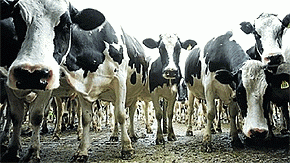
Preparations for the 2013-14 dairy season are gearing up and markets are starting to give their early signals.
Assuming New Zealand milk production recovers as expected from the early 2013 drought - and there is every indication it will - prospects for next year look excellent.
This is despite the IMF cutting global growth prospects.
Much will depend on Chinese demand, but New Zealand is in a favourable position given its uniquely advanced preferential tariff position (although only to a maximum lid).
World export volumes were lower in the March to May period, down 3% from the same period a year ago. Half of that reduction was due to New Zealand and our local drought. These lower offerings enabled prices to stay at high levels - and this was despite India, the world's biggest dairy producer, entering the export market, albeit in a small way.
All indications are that China has been buying forward - imports there are reported to be up 18% in the year through May.
At the same time existing supplies from New Zealand are essentially sold out - other countries are looking to benefit now that (as the Americans are saying), we have "nothing to sell".
This milk shortage is affecting the local markets too in exporting countries. Australian farm gate milk prices are rising - admittedly from a fairly low base - as competition grows in a tight supply situation. Aussie supermarkets are having to offer higher prices to get what they need. It is not often that these retail behemoths are short on pricing power.
Infant formula pricing has become an issue in China too. A range of international brands have been forced to lower the price of their products by about 10% following official Chinese pressure. But no New Zealand brands were conspicuous in those actions and New Zealand has been building significant capacity in infant formula production.
High prices encourage production, and this is happening world-wide. The cycles are long and 'over-production' is always a risk, something that can take years and much producer pain to work through.
But the dairy industry shows little signs of concern at this stage. Led by China, emerging markets seem to be just starting a long-term trend to higher dairy consumption.
-------------------------------------------------------------------------------------------------------------------------------------------
Farms For Sale: the most up-to-date and comprehensive listing of working farms in New Zealand, here »
-------------------------------------------------------------------------------------------------------------------------------------------
New Zealand is the tradtional 'big exporter' although we are a long way from being the 'big producer'. (We are #8 or #9 depending on how you count.) Small increases in production in India, Europe, North America, and even South America - or even China itself - could combine to generate a flood of new volumes available for export.
In a low growth world, there are many covetous eyes on New Zealand's export dairy bonnanza. The price signals are out there. Markets will respond. Everything now depends on continuing rises in emerging country demand.

We welcome your comments below. If you are not already registered, please register to comment
Remember we welcome robust, respectful and insightful debate. We don't welcome abusive or defamatory comments and will de-register those repeatedly making such comments. Our current comment policy is here.